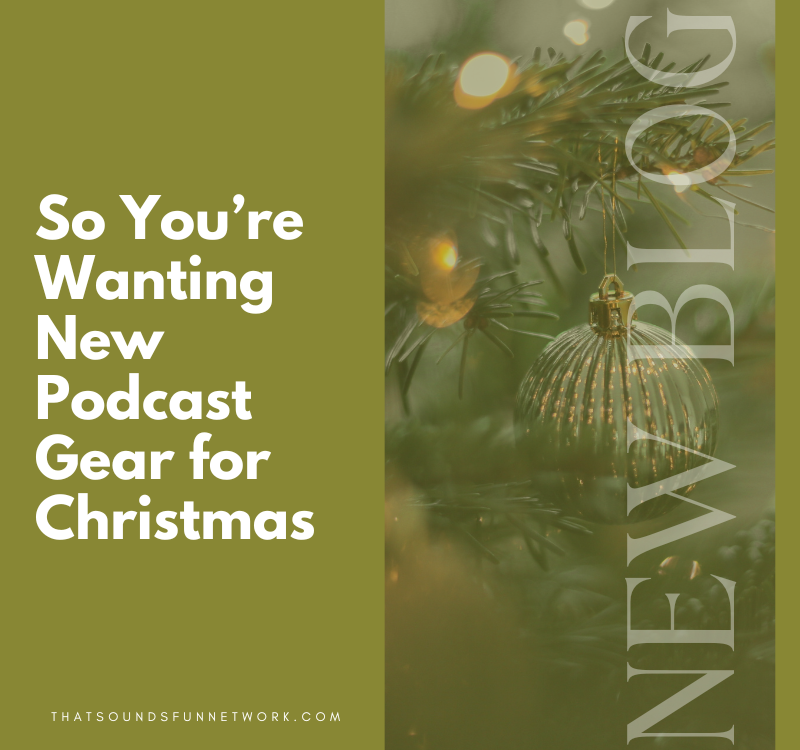As the podcast market continues to grow, it’s important to use your gear as efficiently and effectively as possible. Whether it’s something you do on the side, or your full-time gig, at the That Sounds Fun Network, we prioritize excellence no matter what and utilizing the right podcast equipment can either make or break your podcast quality.
We’ll walk you through the podcast gear you need, from podcast microphones and hosting platforms to podcast recording software, and the best ways to use them for the year ahead.
To begin with, we recommend you start with the following podcast equipment:
- Microphone(s)
- Headphone(s)
- An audio interface
- Recording software or a digital audio workstation
- A camera (if recording video)
Microphones
We recommend using the Shure SM7b microphone best used for studio and home recording for podcasting and broadcasting alike. With a professional XLR connection, it allows you to have more control over the sound with added electromagnetic shielding to fight the hum from any other equipment.
For a less expensive option, take a look at the Pyle PDMICR42SL Classic Retro Microphone which has a built-in pop filter to reduce outside noise plus it uses an XLR connector.
Headphones
Headphones are crucial for podcasters to monitor and adjust the sound quality while recording. There are quality headphones that can fit anyone’s budget.
At the TSF Network, we utilize Audio-Technica ATH-M20X Headphones. These are a great bang for your buck and offer comfort and functionality. Sony Professional Headphones offer everything you need in quality, comfortable headphones for recording as well.
Another budget-friendly option are the Shure SRH440 headphones which are well-reviewed and optimized to work with many professional audio devices.
Audio Interface
The TSF Network uses Sound Devices MixPre-6 which is made up of four clear, ultra low-noise Kashmir preamps to record multiple podcasters with superior quality. Record internally to a compatible SD card or stream your podcast over USB to your computer at home.
A more affordable and fairly popular option is the Focusrite Scarlett 2i2 which is great quality and has solid built-in preamps for a brighter and more open recording.
Recording Software
For beginners, Audacity is the best option and one of the most commonly used digital audio workstations (DAW) in podcasting. Audacity has all the features you need to build a podcast episode you’d like but may require a learning curve. The only downfall is that you cannot multi-track record.
Logic Pro is a robust DAW for macOS users. Similar to the interface of GarageBand for quick onboarding and has professional-quality mixing and mastering. Additionally, Logic Pro Remote turns iOS devices into second screens for production and editing.
Cameras
We enjoy using the Sony a6400 Camera Bodies along with Sony 16-50 Lenses. Prioritizing image and video quality to create a smooth, crisp outcome is imperative. In the podcasting world, it’s helpful to have cameras that run on a power source instead of just batteries, cameras that can record for long periods of time, and have the ability to film in 4k to be able to crop when editing.
At the That Sounds Fun Network, we’re passionate about creating content that is meaningful and encouraging to you by using high-quality equipment and gear while helping others along the way. Make sure you’re subscribed to our newsletter, the After Party to keep up with our latest news and updates!

